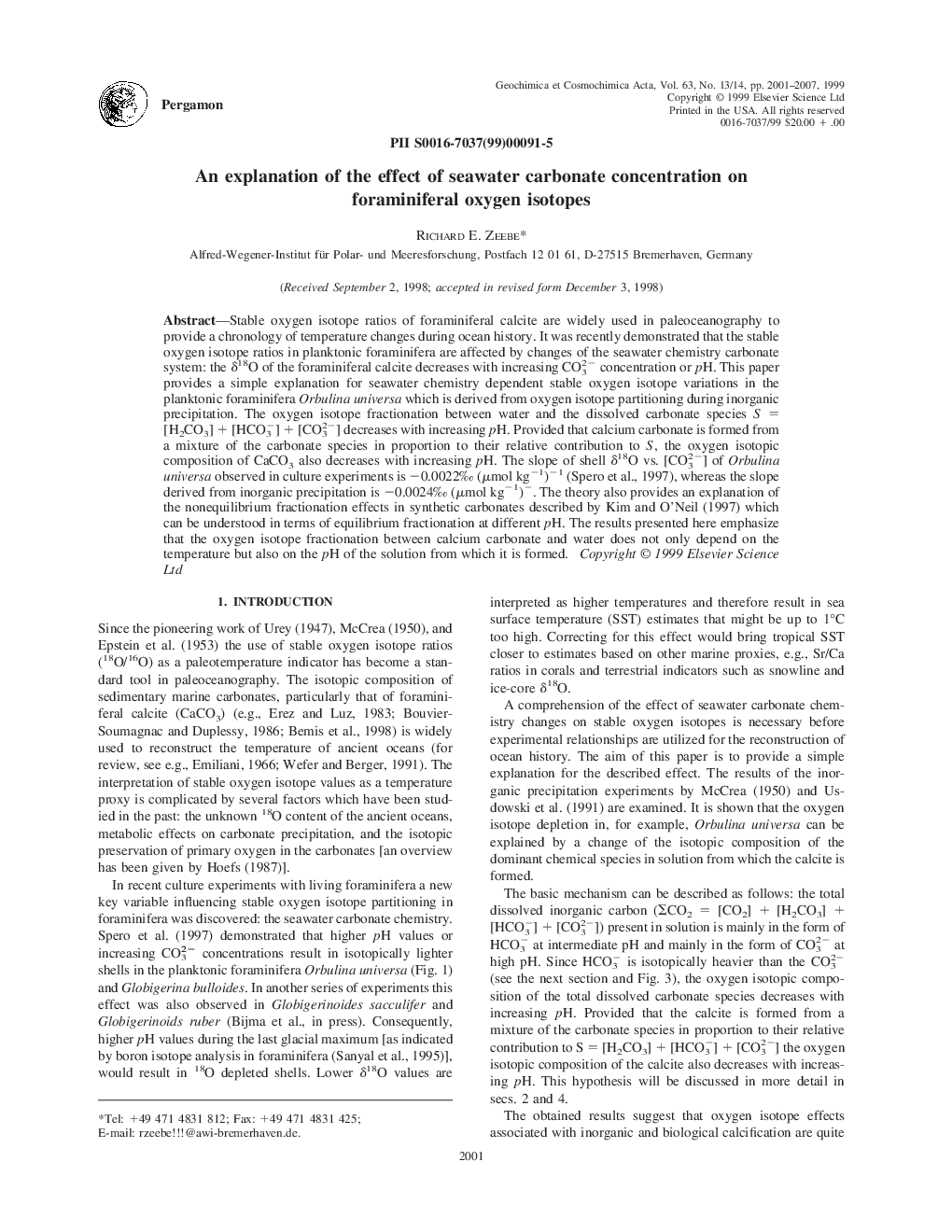| کد مقاله | کد نشریه | سال انتشار | مقاله انگلیسی | نسخه تمام متن |
|---|---|---|---|---|
| 4708486 | 1353184 | 2007 | 7 صفحه PDF | دانلود رایگان |

Stable oxygen isotope ratios of foraminiferal calcite are widely used in paleoceanography to provide a chronology of temperature changes during ocean history. It was recently demonstrated that the stable oxygen isotope ratios in planktonic foraminifera are affected by changes of the seawater chemistry carbonate system: the δ18O of the foraminiferal calcite decreases with increasing CO32− concentration or pH. This paper provides a simple explanation for seawater chemistry dependent stable oxygen isotope variations in the planktonic foraminifera Orbulina universa which is derived from oxygen isotope partitioning during inorganic precipitation. The oxygen isotope fractionation between water and the dissolved carbonate species S = [H2CO3] + [HCO3−] + [CO32−] decreases with increasing pH. Provided that calcium carbonate is formed from a mixture of the carbonate species in proportion to their relative contribution to S, the oxygen isotopic composition of CaCO3 also decreases with increasing pH. The slope of shell δ18O vs. [CO32−] of Orbulina universa observed in culture experiments is −0.0022‰ (μmol kg−1)−1(Spero et al., 1997), whereas the slope derived from inorganic precipitation is −0.0024‰ (μmol kg−1)−. The theory also provides an explanation of the nonequilibrium fractionation effects in synthetic carbonates described by Kim and O’Neil (1997) which can be understood in terms of equilibrium fractionation at different pH. The results presented here emphasize that the oxygen isotope fractionation between calcium carbonate and water does not only depend on the temperature but also on the pH of the solution from which it is formed.
Journal: Geochimica et Cosmochimica Acta - Volume 63, Issues 13–14, July 1999, Pages 2001–2007